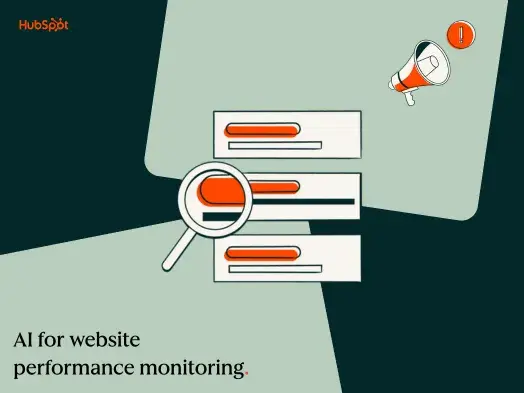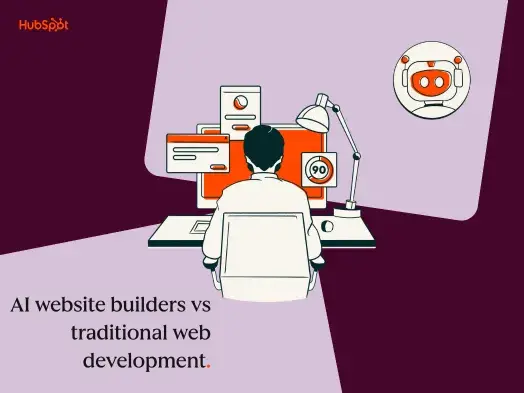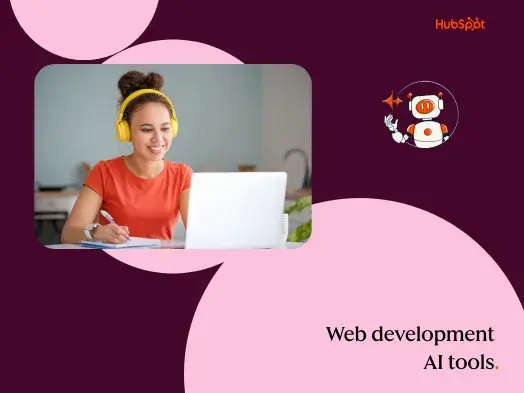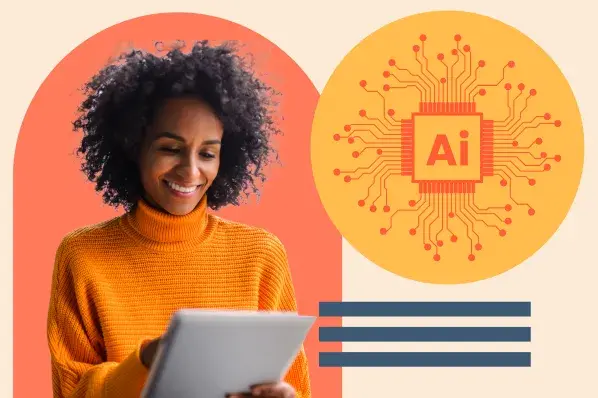While leaving the fate of your marketing efforts in the hands of an AI solution is risky, it can prove helpful for streamlining your operations. Assigning the tedious parts to AI will free up more time and brainpower for the more intensive tasks. One excellent example is your localization strategy.
In this post, you'll learn how this technology can play a role in building and implementing your AI localization strategy. Let's dive in.
What is a localization strategy?
Before we get into how AI can help improve your localization strategy, let's do a quick refresher on what it is. Today, it is more important than ever to provide content in your audience's native language. Brooking Institute estimates there will be more than 4.7 billion middle-class and wealthy consumers in non-English speaking countries by 2030. If your content is only in English, you're ignoring a huge audience that would be interested in your product or service.
Additionally, 9 out of 10 people will ignore a product if it's not available in their native language. If your website and content aren't translated into your target audience's preferred language, chances are you won't reach them – at all.
That's exactly where localization comes into play. It transforms your existing content to match the language, context, and culture of a new target audience.
So what exactly goes into a localization strategy? For starters, language. Localizing means translating your website and content into your target audience's preferred language.
But it's not about outputting a word-for-word literal translation and calling it a day. These translations need to account for cultural references, humor, and context. And all these need the input of a human brain.
However, it doesn't stop there. Localization goes beyond accurate translations. It also considers the cultural context of your target market.
For example, there's imagery and media to consider. Some symbols and even emojis mean something completely different in another language.
It's also important to prep your website for the different language or geographic versions you'll use to serve your target audience. Here are some of the many aspects you'll need to localize on your website:
-
Multilingual customer support
-
Changing the website elements like the design and layout to fit languages formatted for right-to-left reading
-
Local currencies, units of measure, date formats, and phone numbers
-
Contact details, if you have a local office
Now that you have a better understanding of localization, let's discuss how AI can help take your strategy to the next level.
How can AI take your localization strategy to the next level?
A localization strategy is rarely a one-and-done process. It constantly needs tweaking since everything moves at the speed of light—technologies, trends, and consumption patterns. When you're busy overseeing everything else, it's easy to let your localization plans slip through the cracks.
The good news? AI can make this more efficient for you. Here's how.
1. It speeds up your website translation efforts.
We can't start a list without discussing website translation, of course!
Accurate translation is an indispensable part of any localization strategy. The traditional route of relying solely on human translators can be expensive and time-consuming. That's where AI translation comes into play.
Neural machine translation (NMT) has dramatically improved how translation projects can be handled. Traditional localized content took a lot of time to produce. Human linguists and translators would carefully pore over each translated word. As you can guess, the cost of this is high.
But AI translation doesn't need the same manpower as traditional methods. It uses neural networks and algorithms to learn what a word means, how it sits in context, and how to structure sentences in a way feels natural to a reader. Its accuracy also continues to increase daily.
Since localizing your content no longer takes as long, you can do it at a broader scale and more cost-effectively. If you've been eyeing many target markets in several geographies, AI can help you get there faster.
.png?width=650&height=433&name=ai-localization-strategy%20(1).png)
Combining the knowledge of human translators with the skills and speed of neural machine translation can yield outstanding results. Since AI translation is already on top of tracking language changes, human editors don't need to spend as much time reviewing and verifying the translations.
2. It simplifies your content.
When your customers have to think twice about what they're reading, they'll give up on trying to understand what you're offering. That's where AI can help: It identifies when a translated sentence uses language too difficult to understand. You won't have to dedicate hours or spend resources on poring over each piece of content to ensure it's punchy and straightforward enough.
.png?width=650&height=433&name=ai-localization-strategy%20(2).png)
Tools that use natural language processing (NLP) and deep learning can also distinguish language on a granular level. It uses historical data to learn the appropriate tone according to the content type, industry, and domain. Machine translation providers now have options for a formal and informal tone of voice.
Integrating AI into your localization strategy allows you to filter out highly technical content and find ways to simplify it—to the point that a high school student knows what you're all about. Because of this, you can cut the post-editing stage, as identifying errors in the source and target text will be less time-consuming.
3. It helps you provide personalization.
An AI localization strategy will take your marketing campaigns to new heights. How? Through personalization on a new level.
Personalization is everything when winning over your target audience. When you put your messages within their context, they'll feel more understood and seen by your brand.
Luckily, AI can help you accomplish a high degree of personalization. This is because of the amount of data it uses. You'll have the information needed to craft a clear message that resonates with your new audience.
.png?width=650&height=433&name=ai-localization-strategy%20(3).png)
For instance, it will give you insight into your target audience's buying patterns. These are shaped by where they live, work, how much money they earn, their hobbies and preferences, and more. With this data, you can predict when they're ready to buy a product or service like yours, where they're likely to look for it, and the kind of business they'll buy from.
When you know your customers' buying patterns for your target area, it's time to set things in motion. You can personalize your marketing efforts and choose the corresponding content to nudge them until they're ready to buy from you.
You'll also determine what website pages and elements to change to nurture your new audience even more. Location-based offers, personalized welcome messages, and category recommendations will help make the user experience seamless.
The best part? With AI, all of this is done faster.
4. It localizes your media more efficiently.
It's simpler to conceptualize localizing written content. But what about images, videos, files, and other media that aren't as straightforward?
AI makes it possible to adjust your website completely to foreign markets—even your media. It's not just photos of your product or service it will localize, but images you've used throughout your website. These include:
-
Images in your blogs
-
Diagrams
-
Infographics
-
Icons
-
Media in your PDFs
Translating and localizing these individually would take tons of time and effort, even with the help of translation services.
But AI thoroughly sweeps your website's visual elements for media to determine what requires translation. With AI doing the legwork for you, you'll spend less time localizing and more time crafting the messages you want to use to target your audience.
Curious about how this works in real-time? Try out Google Translate's camera translation feature. It instantly translates whole sentences in the pictures that you take. That makes it helpful to understand signs, labels, and instructions in another language.
.png?width=650&height=433&name=ai-localization-strategy%20(5).png)
Meta's AI team built a solution that translated text in images and photographs while retaining the original typography and style. If this tool were open for public use, imagine how much faster this would speed up the localization process.
5. It can provide a better customer experience through multilingual chatbots.
Customer service typically takes a lot of resources and manpower, especially when catering to numerous time zones. But thanks to AI, a significant portion of this can be automated.
Think about voice assistants like Siri and Alexa. They use insights from conversational AI to make interactions with them more natural and intuitive. They're very successful, as 95% of customer interactions will be AI-driven by 2025.
.png?width=650&height=433&name=ai-localization-strategy%20(6).png)
Multilingual chatbots take a huge load off customer service representatives by anticipating and addressing some of their customers' most frequently asked questions. AI has only made these chatbots more intelligent and sophisticated. Sometimes, they're mistaken for a human representative.
Depending on the inquiry, they're a more suitable alternative. They offer immediate responses, faster turnaround times, more accuracy, and better customer engagement. And yes — in a variety of languages.
Even better? Since they're multilingual, they immediately serve a bigger audience. Using multilingual chatbots in your AI localization strategy will help you deploy an immediate support team and address your prospects' concerns. They'll feel like you value them, making them more likely to convert.
6. It sharpens your SEO strategy.
Localizing your website means increasing your chances of landing on the first page of the SERPs. Part of that includes applying the correct attributes (like hreflang tags and the appropriate URL structure) to your website so search engines recognize it. Once you've successfully done this, your content is one step closer to reaching your target audience.
AI can even help you create content by suggesting prompts, predicting the following few words, or writing a post for you. Keep in mind that you'll still need to tweak this content.
.png?width=650&height=433&name=ai-localization-strategy%20(7).png)
Still, AI-produced content has been especially controversial recently. And Google has announced that it won't penalize AI-written content as long as it remains relevant, credible, and well-written. Though a human eye is necessary for tightening your content, it can accelerate your localized SEO efforts.
Localize with AI
Humans dictate changes and trends in languages and preferences, so the localization industry likely can't ever be fully automated. But AI has definitely played a massive part in making it more accessible for everyone.
Since AI makes data-driven decisions, it can cover routine project-related tasks. That way, managers can focus on more cognitive and strategic tasks instead. And with the huge strides NLP is making (think of conversational AI and multilingual chatbots), integrating AI into your localization strategy will create frictionless local user experiences for your target audience.
Artificial Intelligence












